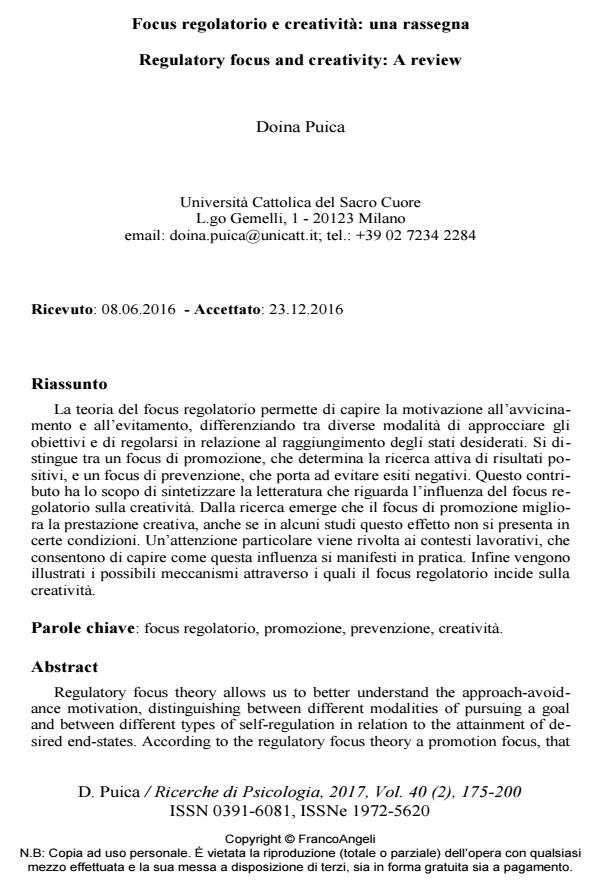Regulatory focus and creativity: A review
Journal title RICERCHE DI PSICOLOGIA
Author/s Doina Puica
Publishing Year 2017 Issue 2017/2
Language Italian Pages 26 P. 175-200 File size 250 KB
DOI 10.3280/RIP2017-002002
DOI is like a bar code for intellectual property: to have more infomation
click here
Below, you can see the article first page
If you want to buy this article in PDF format, you can do it, following the instructions to buy download credits

FrancoAngeli is member of Publishers International Linking Association, Inc (PILA), a not-for-profit association which run the CrossRef service enabling links to and from online scholarly content.
Regulatory focus theory allows us to better understand the approach-avoidance motivation, distinguishing between different modalities of pursuing a goal and between different types of self-regulation in relation to the attainment of desired end-states. According to the regulatory focus theory a promotion focus, that hints people actively searching of positive outcomes, and a prevention focus, that prompts the avoidance of negative outcomes, can be distinguished. The aim of this paper is to review the literature about the influence of regulatory focus on creativity. Research shows that the promotion focus improves creativity, even though some studies failed to support this facilitating effect under certain conditions. A particular attention is addressed to the influence of regulatory focus on creativity in organizational settings, so to allow us to understand the practical side of the issue. Finally, the review takes into account the possible mechanisms through which the regulatory focus influence the creativity.
Keywords: Regulatory focus, promotion, prevention, creativity.
Doina Puica, Focus regolatorio e creatività: una rassegna in "RICERCHE DI PSICOLOGIA " 2/2017, pp 175-200, DOI: 10.3280/RIP2017-002002